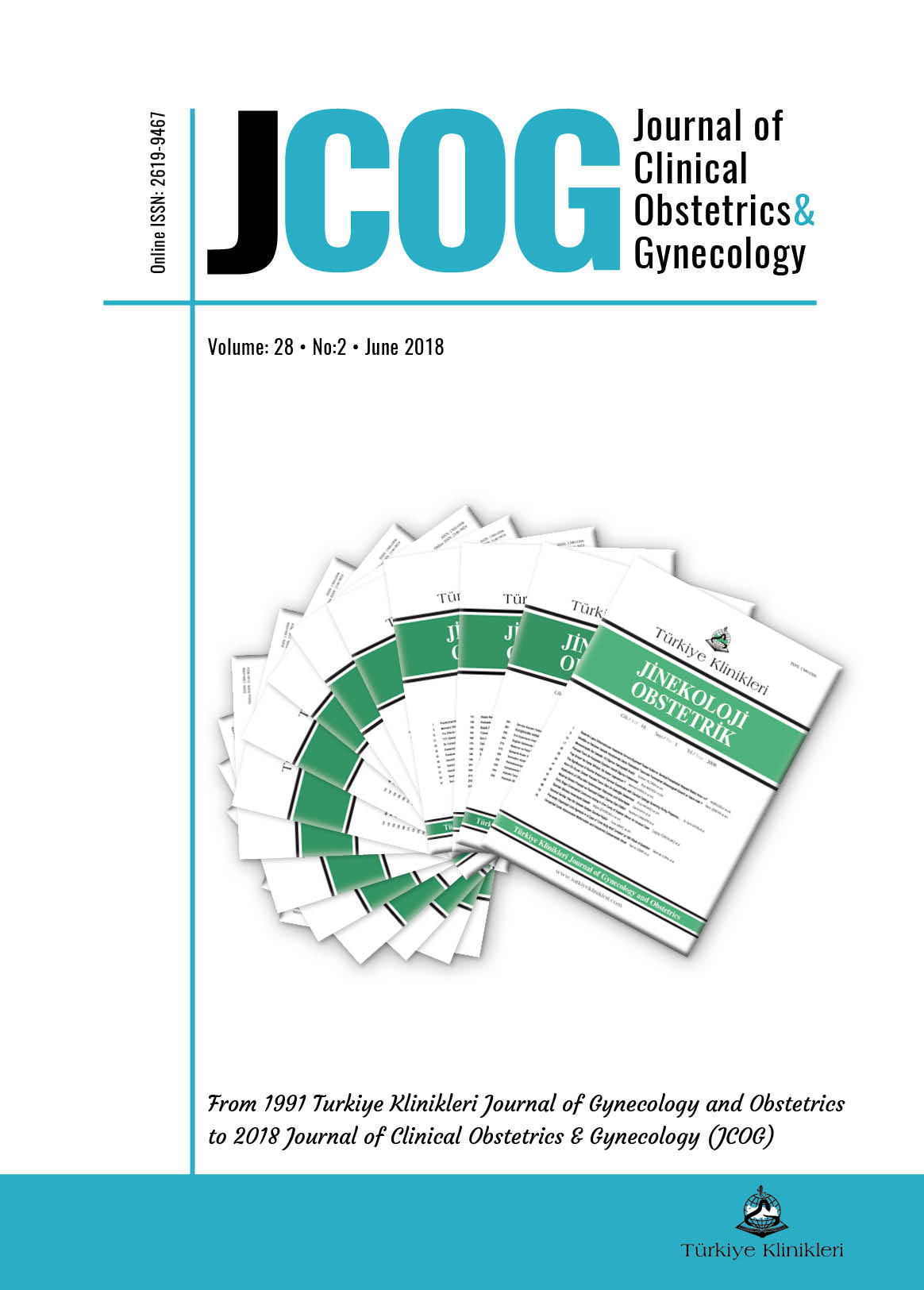Open Access
Peer Reviewed
ORIGINAL RESEARCH
2814 Viewed1458 Downloaded
Changing Trend of Tubal Ectopic Pregnancy Management During the Experience of Seven Years
J Clin Obstet Gynecol. 2018;28(2):44-51
DOI: 10.5336/jcog.2018-60531
Article Language: EN
Article Language: EN
Copyright Ⓒ 2025 by Türkiye Klinikleri. This is an open access article under the CC BY-NC-ND license (http://creativecommons.org/licenses/by-nc-nd/4.0/)
ABSTRACT
Objective: Ectopic pregnancy is a condition where a fertilized egg gets implanted outside the uterus. The most common site of attachment is the fallopian tube and the condition is termed tubal ectopic pregnancy. It is considered a gynecologic emergency if it is neglected or overlooked. Technological progress and advances in management modalities have provided clinicians with various treatment options for tubal ectopic pregnancy. In the current study, we analyzed the management trends in tubal ectopic pregnancy including an evaluation of the clinical profile and management modalities of the cases. Material and Methods: The present study is a retrospective observational study that included women with tubal ectopic pregnancy who were admitted to the department of obstetrics and gynecology. The patients were allocated to two groups, namely MTX, and surgical treatment groups. Results: Of the 207 women included in the study, 84 and 123 were treated with surgery and MTX, respectively, at the first admission. The most common symptom noted was lower abdominal pain in 182 (87.9%) patients and vaginal bleeding was present in 171 (82%) women. The most common ultrasonographic finding was adnexal mass in 156 (75%) women. We performed salpingectomy in 67 (56%) and salpingostomy in 52 (44%) cases that were finally surgically treated (n=119). Our trend analysis reported a significant and quadratic increasing trend for salpingectomy (÷2=5.539, degrees of freedom [df]=1, p=0.02) from 2009 to 2015. There was a significantly increasing linear trend in the MTX treatment group, whereas the surgery group presented a significant decreasing linear trend (÷2=18.56, df=1, p=0.001). Conclusion: The present study observed a downward change in the management strategies of tubal ectopic pregnancy for surgery and an upward change for medical management of cases with MTX between 2009 and 2015.
Objective: Ectopic pregnancy is a condition where a fertilized egg gets implanted outside the uterus. The most common site of attachment is the fallopian tube and the condition is termed tubal ectopic pregnancy. It is considered a gynecologic emergency if it is neglected or overlooked. Technological progress and advances in management modalities have provided clinicians with various treatment options for tubal ectopic pregnancy. In the current study, we analyzed the management trends in tubal ectopic pregnancy including an evaluation of the clinical profile and management modalities of the cases. Material and Methods: The present study is a retrospective observational study that included women with tubal ectopic pregnancy who were admitted to the department of obstetrics and gynecology. The patients were allocated to two groups, namely MTX, and surgical treatment groups. Results: Of the 207 women included in the study, 84 and 123 were treated with surgery and MTX, respectively, at the first admission. The most common symptom noted was lower abdominal pain in 182 (87.9%) patients and vaginal bleeding was present in 171 (82%) women. The most common ultrasonographic finding was adnexal mass in 156 (75%) women. We performed salpingectomy in 67 (56%) and salpingostomy in 52 (44%) cases that were finally surgically treated (n=119). Our trend analysis reported a significant and quadratic increasing trend for salpingectomy (÷2=5.539, degrees of freedom [df]=1, p=0.02) from 2009 to 2015. There was a significantly increasing linear trend in the MTX treatment group, whereas the surgery group presented a significant decreasing linear trend (÷2=18.56, df=1, p=0.001). Conclusion: The present study observed a downward change in the management strategies of tubal ectopic pregnancy for surgery and an upward change for medical management of cases with MTX between 2009 and 2015.
MENU
POPULAR ARTICLES
MOST DOWNLOADED ARTICLES





This journal is licensed under a Creative Commons Attribution-NonCommercial-NoDerivatives 4.0 International License.










